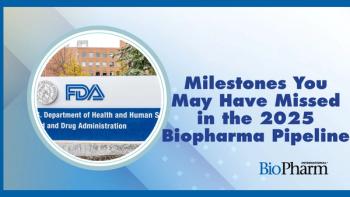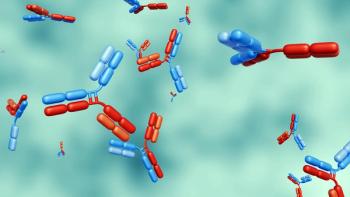
Implications of the First Liquid IV Infliximab Biosimilar
Key Takeaways
- The liquid formulation of Remsima IV eliminates the reconstitution step, reducing preparation time by 51% and costs by 20%.
- Stability of the liquid formulation is comparable to the powder form, ensuring efficacy and safety.
The EC approves the world's first liquid IV infliximab biosimilar, which cuts preparation time by 51% and offers up to €2.6 million (US$3.0 million) in potential annual savings.
The European Commission (EC) has granted marketing authorization for a liquid formulation of intravenous (IV) infliximab under the brand name Remsima IV by Celltrion (1). Remsima is a
The EC’s approval covers all previously
“Infliximab has long been a cornerstone in the management of immune-mediated inflammatory diseases, offering significant benefits to patients and healthcare systems,” said Daniele Napolitano, inflammatory bowel disease nurse at the Center for Digestive System Diseases, Fondazione Policlinico Gemelli Istituto di Ricovero e Cura a Carattere Scientifico, Rome, Italy, in the press release (1).
How will the new formulation drive preparation efficiency?
The transition from a lyophilized powder to a ready-to-use liquid formulation carries significant impact for biopharmaceutical
A multinational qualitative study conducted by Celltrion across seven European countries evaluated the practical benefits of this liquid formulation from the perspective of hospital pharmacists and nurses involved in its preparation. The study found that the IV infliximab liquid formulation demonstrated a reduction in mean preparation time by approximately 51% and a preparation-related cost reduction of 20% (4). According to Celltrion, these efficiencies free up healthcare professionals’ resources, enabling them to focus more significantly on patient care (1).
What does regulatory comparability mean for IV infliximab stability?
The
The clinical importance of infliximab as a treatment for immune-mediated inflammatory diseases is well established, benefiting both patients and healthcare systems (6) (see Table). “The approval of the new liquid formulation is welcome news, as it is expected to enhance efficiency in infusion settings, by eliminating the reconstitution step and reducing preparation time and contamination risk, allowing us to optimize resources while maintaining efficacy and safety,” said Napolitano in the release (1).
Can changes in drug formulation optimize hospital resource management?
Beyond time savings, the shift to a liquid formulation offers scalable economic advantages and improved logistics for hospitals (4). Simulation modeling based on the preparation data in Celltrion’s study projects that the adoption of the liquid formulation could generate substantial economic benefits, such as €2.6 million (US$3.0 million) in annual cost savings across the seven countries studied—benefits attributed to decreased labor costs associated with drug reconstitution and handling, as well as reduced use of consumables and shorter preparation times(4).
Further contributing to logistical efficiency, compact vial design reduces required storage space by 50%–70%, a benefit that supports hospital logistics and may contribute to environmental sustainability through waste and energy consumption reductions that are linked to drug storage and preparation processes (4).
References
1. Celltrion.
2. Celltrion.
3. Joshi, S.; Jindal, P.; Gautam, S.; et al. Mini Review on the Lyophilization: A Basic Requirement for Formulation Development and Stability Modifier. Assay Drug Dev. Technol. 2025, 23 (4). DOI:
4. Nam, K.; Kwon, T. S.; Di Biasio, F.; et al. Perceived Benefits and Cost Savings of Liquid Formulation of Intravenous Infliximab: Perspectives of Seven European Countries. Expert Opin. Biol. Ther. 2025, 25 (9), 1017–1024. DOI:
5. Celltrion Data on File. CT-P13 Common Technical Document Module 3. Incheon, South Korea: Celltrion Regulatory Affairs. 2025.
6. Cheng, H. Assessing the Efficacy of Infliximab in Promoting Vascular and Mucosal Healing in Immunoglobulin-Resistant Kawasaki Disease: A Meta-Analysis. BMC Pediatr. 2025, 25 (1), 147. DOI:
7. EMA.
8. EMA.
9. EMA.
10. EMA.
Newsletter
Stay at the forefront of biopharmaceutical innovation—subscribe to BioPharm International for expert insights on drug development, manufacturing, compliance, and more.





